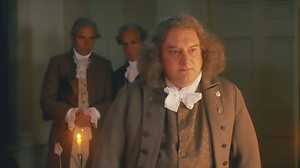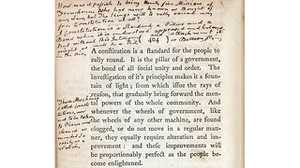The Continental Congress
The First Continental Congress formed in response to the British Parliament's passage of the Intolerable Acts (called the Coercive Acts in England), which aimed to punish Massachusetts for the Boston Tea Party. In 1773 rebels unconvincingly disguised as Mohawk Indians boarded three docked ships in Boston Harbor and dumped 90,000 pounds of tea overboard. England moved swiftly to punish this act of blatant disrespect. The Intolerable Acts closed the busy port until the colonists repaid the damage caused by the Tea Party, installed a British general as governor of the colony, unilaterally changed the colony's charter, and even revoked certain liberties, including the right to hold meetings.

The First Meeting Towards Independence
On September 5, 1774, delegates from 12 of the 13 colonies met for the first time at Carpenter's Hall in Philadelphia. Only Georgia didn't send a representative. John Adams served as one of four Massachusetts delegates and quickly established himself as a strong proponent for independence. He said independence, not reconciliation, could be the colonies' only course. It was a radical idea. Many of the delegates feared more trade boycotts and brutalization in a war that could not be won, but Adams knew that war was unavoidable if freedom was to be secured. During these congressional sessions, he earned the nickname the "Atlas of Independence."
Demands in Place
By the time the First Continental Congress adjourned in October 1774, significant steps had been taken toward Adams' goal. The colonies had formed a united front: If one colony was attacked, the other colonies would defend it. Under The Declaration and Resolves, the Congress condemned British Parliament and King George III for interfering in colonial matters and granted each colony the right to a colonial treasury and legislature. The Congress also passed the Suffolk Resolves in defiance of the Intolerable Acts (which would be repealed in 1778); set up the Continental Association to enforce a national embargo of trade with Great Britain; and called for the training of a colonial militia. Lastly the Continental Congress issued a petition, the Declaration of Rights and Grievances, to King George, a portion of which was written by John Adams. Something of a precursor to the Declaration of Independence, it called for greater American autonomy and limits on Parliament's power over the colonies.
A Change of Tone
By the time the Second Continental Congress convened on May 10, 1775, with delegates from all 13 colonies in attendance, war had begun, and the tone of the Congress had changed. In a letter to Abigail, Adams described the delegates as falling into three camps: the loyalists who hadn't yet forsworn allegiance to the king; the middle third, who were too cautious to take a stand on either side of the issue; and those who believed independence must be the goal of the war. Adams, of course, was the truest of the true blue.

Taking Action, Undecided Folly
The first session of the Second Continental Congress lasted from May to July, the second from September to December 1775. The Congress acted as a makeshift central government, creating the Continental Army, electing George Washington as its commander and issuing paper currency. It asked each colony to provide soldiers and money for the new army, issued a declaration allowing colonists to use their weapons, and reopened American ports in defiance of the Navigation Act. Yet the Congress still could not reach a consensus on independence. Although all the delegates recognized that America was at war, not all were prepared to relinquish ties to the British crown. Pennsylvania's John Dickinson called the goal of independence "suicidal folly." In July 1775 he drew up the Olive Branch Petition, which asked King George III for changes in governance, but did not threaten to end American allegiance. Over Adams' protest, Dickinson's petition was sent. The king refused to look at it.
Congress Uses Common Sense
By the summer of 1776, with many revolutionary battles already fought and lost, Congressional sentiment had swung almost unanimously toward independence, with a big boost from Thomas Paine's rousing pamphlet Common Sense. On June 7, 1776, Virginia's Richard Henry Lee put forth a resolution that proclaimed the colonies "free and independent states ... absolved from all allegiance to the British Crown. ..." In less than a month, the Second Continental Congress completed its most definitive task: the adoption of Thomas Jefferson's Declaration of Independence on July 4, 1776.
A Legacy
The Continental Congress continued to function until 1781 when it was supplemented by another, nearly similar body, under the Articles of Confederation. During all these war years, the Continental Congress managed America's political, military, and diplomatic needs.







